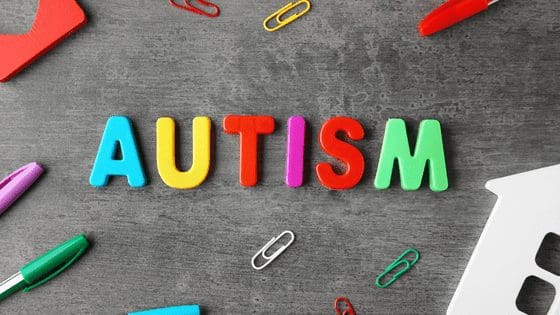A decade ago, neurodiversity was a largely unknown concept, and many people with neurodiversity conditions such as autism and dyslexia were hesitant to disclose their condition. Although more people openly talk about their neurodiversity conditions and the challenges and strengths that accompany them, people with neurodiversity conditions still experience biases and misunderstandings.
It’s believed that 1 in 15 people have some form of neurodivergence, and some sources suggest it could be as high as 1 in 5. As neurodiversity awareness increases, the various neurodiverse conditions and their symptoms become more widely recognised and understood. As a result, we are seeing an increase in children and adults seeking diagnoses and receiving the support they need.
Furthermore, as perceptions shift and awareness grows, fewer organisations view neurodivergence as a disadvantage. Instead, they see it as simply a different way of learning and processing information that should be valued and respected.
What is neurodiversity?
The term ‘neurodiversity‘ is relatively new and was only coined in the late 1990s by an Australian sociologist, Judy Singer. Singer discovered that each brain has a unique nervous system with a unique combination of abilities and needs, and it is this difference that ‘neurodiversity‘ refers to, along with how these differences influence how we experience and interact with the world.
Is neurodiversity a disability?
Those considered “neurotypical” have different challenges than those with a neurodiverse condition. Although some social skills may be difficult for neurodiverse people, many have above-average analytical, information processing, and pattern recognition skills.
While many people with neurodiverse conditions do not consider themselves disabled, people who are neurodivergent may need accommodations in school or the workplace to meet their unique needs and ways of functioning.
For the purposes of the Equality Act of 2010, neurodiverse conditions are frequently considered disabilities under the Act. As such neurodiverse employees would be entitled to additional safeguards and reasonable adjustments as disability is a protected characteristic under the Act.
Neurodiversity conditions
Autism Spectrum Disorder (ASD):
Autism Spectrum Disorder is often referred to as Autism or ASD. It is a neurodiversity condition characterised by social interaction and communication difficulties and restricted or repetitive thought and behaviour patterns.
For details on how Autism can impact people in the workplace and how you can better support individuals with ASD, read our article, Autism in the Workplace.

Attention Deficit Hyperactivity Disorder (ADHD)
ADHD is a neurodiversity condition characterised by inattention, hyperactivity, and impulsivity. However, some people with the condition experience no or little hyperactivity. In such instances, the condition is typically referred to as ADD.
A common misconception is that people with ADHD or ADD cannot concentrate. In fact, people with the condition experience challenges in regulating attention, ranging from inattention to hyperfocus.
Dyslexia
Dyslexia is often referred to as a learning disorder or learning difficulty. This neurodiverse condition primarily affects reading and writing skills, making it challenging to decode words and comprehend written text. Those with dyslexia may have trouble understanding and recalling what they see and hear, which can impair learning and the development of literacy skills. Dyslexia can also impact other areas, such as organisational skills.
Dyscalculia
Dyscalculia is also referred to as a learning disorder, but this time affecting number comprehension, making it difficult to understand numbers and perform calculations. It can also impact everyday tasks such as reading a clock.
For more information on the neurodiversity condition dyscalculia, how it can impact people in the workplace and how you can better support individuals with this neurodiverse condition, see our article, Breaking Down Dyscalculia: Understanding the Learning Disorder.
Dyspraxia
The neurodiverse condition dyspraxia, also known as developmental coordination disorder (DCD), disrupts motor planning and coordination, making it challenging to carry out physical tasks. It is estimated that dyspraxia affects up to 10% of the population.
People with dyspraxia or DCD often experience challenges with tasks requiring balance or hand-eye coordination, such as playing sports or learning to drive a car. Dyspraxia can also affect fine motor skills, such as writing or using small objects.
Tourette’s Syndrome
This neurological condition is characterised by repetitive, involuntary movements and vocalisations called “tics”. Tics can range from small movements such as blinking to those that involve several parts and the body and vocalisations.
Neurodiversity is not limited to these conditions. Many other conditions and variations in brain functioning fall under the umbrella term “neurodiversity”. It is also common for a neurodiverse individual to be diagnosed with two or more conditions. For example, approximately one in two people with ADHD have dyslexia, and two in three people with ADHD have autistic spectrum traits.
It’s worth highlighting that not all individuals with a neurodivergent condition or variations in brain functioning identify as neurodivergent.

Neurodiverse symptoms
Each neurodiversity condition has unique symptoms and characteristics, and individuals with the same condition are unlikely to experience all the same symptoms or to the same degree. Consequently, it’s essential to avoid making any assumptions when attempting to support neurodiverse individuals. Instead, if individuals are willing to talk about their condition, actively listen and seek to learn about their specific challenges.
Increasing your awareness of neurodiversity and the different neurodiverse conditions will enable you to identify areas where simple and incredibly cost effective adjustments can be made.
There are also many benefits to neurodiversity in the workplace, and by developing neurodiversity awareness, you will also be better placed to help neurodiverse employees to leverage their strengths and create a more inclusive working environment overall.
Increasing neurodiversity awareness
A growing number of initiatives are taking place to increase neurodiversity awareness and celebrate neurodiversity conditions. Here are some of them:
1. Neurodiversity Week
The Neurodiversity Celebration Week, which will take place from 13th to 19th March 2023, was established to increase public awareness of neurodiversity, celebrate neurological diversity, and dispel myths and assumptions about neurodiverse conditions.
2. Neurodiversity Training
Increasingly, organisations are including neurodiversity awareness training as part of their learning and development strategies to increase awareness and better support neurodiverse employees.
3. Diagnosis of neurodiversity conditions a top priority
In the UK, the NHS has started to make diagnosing neurodiverse conditions a top priority, along with assisting people with neurodiverse conditions. For instance, the proportion of patients with an autism referral who have their first care contact within 13 weeks increased substantially from 5,797 to 7,837 between April 2021 and March 2022 – a 35% increase.
Neurodiversity awareness is improving as companies begin to notice the prevalence and benefits of recruiting people with neurodiverse conditions. There is still more work to be done in terms of educating people on how to work with neurodivergent teams and how to prevent unconscious bias from impacting how they perceive stereotypes before people and businesses can truly benefit from it. Still, we are heading in the right direction.
To discuss our training courses Neurodiversity: Understanding & Supporting Neurodivergent Employees or Unconscious Bias: From Awareness to Action, call us on 0161 949 9736 or complete our contact form.
Published 13th March 2023.




